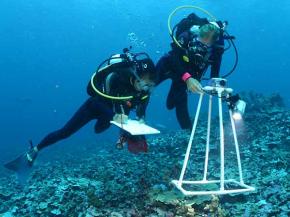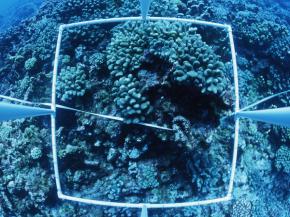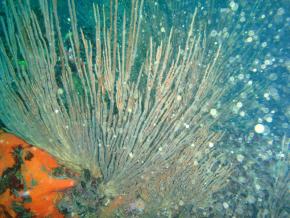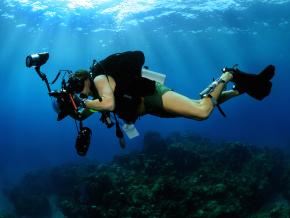Title
Practices of Science: Underwater Photography and Videography
NGSS Science and Engineering Practices
NGSS Disciplinary Core Ideas
Capturing images or video underwater can be a very useful tool for conducting scientific research as well as a fun hobby. Underwater photography is very useful when scientists need to examine objects on the seafloor over time. For example, scientists may use underwater photography to take photoquadrats to look at the abundance of coral over time (SF Fig. 9.1) at several reef locations. A photoquadrat is a photograph of a particular habitat within a standardized square area, or quadrat. Underwater photos can be used to help identify species without removing them from the water, especially those that are slow-moving (e.g., nudibranchs) or sessile (e.g., barnacles). Underwater video can be used to observe the behavior of motile species, such as the interaction between mate pairs in butterfly fish or social behavior in seals. Video can even be used to examine phenomena such as hydrothermal vents and underwater volcanic eruptions.
SF Fig. 9.1. (A) Marine biologists use photoquadrats to record species diversity and percent coral cover underwater at the PapahДҒnaumokuДҒkea Marine National Monument in HawaiвҖҳi.
Image courtesy of National Oceanic and Atmospheric Administration (NOAA)
SF Fig. 9.1. (B) A photoquadrat image was taken by US Fish and Wildlife Service biologists at Jarvis Island in the central Pacific ocean basin.
Image courtesy of United States Fish and Wildlife Service (USFWS)
Scientists using photography and video underwater face many challenges. For example, cameras must be placed in watertight housings. Light attenuation means that red wavelengths of light are absorbed near the surface and light intensity decreases with depth. Scientists often bring their own light sources to add the missing colors back in and capture color markings of species that may be important for identification. Another challenge with taking photos or video underwater is that there are often large particles of sediment and plankton in between the camera and the object of interest. When photographers take photos with a flash, light reflects off these particles and show up as bright dots in the final shot. This reflection pattern is known as backscatter (SF Fig. 9.2 A). To address this problem, photographers use flashes that are off to the side of the camera, called strobes, so that when a photograph is taken, most of the light reflects back at the strobe and not at the camera lens (SF Fig. 9.2 B)
SF Fig. 9.2. (A) An example of backscatter reflection pattern is seen in an underwater photograph.
SF Fig. 9.2. (B) A strobe flash offset from the camera lens is used to reduce backscatter.











